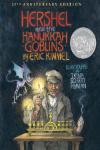Intertwined Ambitions: A Captivating Novel Weaving Family Drama, Business Development, and Political Intrigue

Buy this book at Amazon or at Bookshop
Thoughts on “Amy Unbound” by Martin Sneider
It could not have been more appropriate that I read most of Amy Unbound by Martin Sneider during Passover as the book’s and the holiday’s main theme is freedom. When we talk about freedom, there are three important questions: freedom from what, freedom at what cost, and whether internal or external. The retold story and celebration of Passover is explicitly about regaining freedom from slavery. This message has been generalized since its origins and now stands for freedom in general. The titular character of the book also yearns for freedom, but in her case, the cage she wants to break free from is the existence in a relatively small town and a passionless and attention-less marriage. She feels bound by both as her ambitions are larger than the first, and her emotions and needs are not satisfied by the latter.
The question of cost rarely enters Amy’s determined mind, but I am sure it was on the minds of at least some of the Jews who were led by Moses, leaving their whole previous life behind. Regarding the spirit of adventure vs. the importance of security, we are scattered on a spectrum: for some, a sense of security trumps everything, while others cannot care less about it, and most of us are somewhere in between. This measure also depends on the dimensions. If family, money, or social status were a scale, then how central our accomplishments in these areas are to our well-being varies greatly. The fleeing Jews had few options, and according to tradition, they were willing to give up the little security they had, although the process required a hot-headed catalyst like Moses.
Amy, on the other hand, had lots of options because she already gained her financial freedom, having saved enough money to be affluent for the rest of her life. She may not have considered the price of what she was willing to give up in pursuit of an imagined better future. I got heavily invested emotionally in the book, especially when I started to guess which direction to go. On the one hand, a masterfully crafted tragedy loomed over it. Hints after hints pointed towards a devastating crash at the end akin to the classic Greek tragedies. On the other hand, knowing the American audiences’ (and my own) addiction to happy endings and redemptive values, I figured it could not crash and burn. I will not fully spoil the story’s ending here, but I assure you the author worked out a beautiful synthesis satisfying the various drives of the main characters.
Or did he? I am posting this review on Mother’s Day, or more precisely when it is celebrated in the US. “Mothers’ Day,” the plural version, “started in the 1870s, when the sheer enormity of the death caused by the Civil War and the Franco-Prussian War convinced writer and reformer Julia Ward Howe that women must take control of politics from the men who had permitted such carnage.” (As explained by the excellent Heather Cox Richardson here.) Idealistic Amy set out to change the US and make it a better place, not just St Louis. Ultimately, she failed to reach her goal. So, one can read the book as another story where a woman wanted more power in politics but could not attain it. This would be a false reading, though, for multiple reasons. Her drive was not just altruistic but personal ambition, too. The reason for her lack of success included some bad judgments and the actions of a vindictive friend who also happened to be a woman. And the book ends with a glimmer of hope, suggesting that her failure is not final.
I found three more themes noteworthy in the book. It provides a peek into the business world for those not immersed in it. How do high-level managers think and act, and what environment do they surround themselves in? It even has some practical tips. My favorite is from page 201: “The three magic words in retailing were Price, Selection, and Convenience. Retailers that failed to offer at least one or two of these elements were in trouble. Amazon offered all three!” I had never thought of it this way, and it makes perfect sense. While I don’t suggest reading the book as a business manual, keep an eye out for other ideas you can learn from. It’s worth it. It is semi-autobiographical as the author’s home page states he “started as a shoe salesman and rose to president, co-CEO, and chief merchant of one of the nation’s largest fashion shoe and apparel specialty chains.” In other words, he knows what he wrote about.
A second fascinating aspect of the novel is the revenge of the reverse “Jewess” notion. Let me quote wikipedia about it, and then I will explain:
“La belle juive (lit. ’The Beautiful Jewess’) is a recurrent motif with archetypal significance in Romanticism, most prevalent in 19th-century European literature. The origins of la belle juive date back to medieval literature…The appearance of the belle juive is commonly deemed a manifestation of antisemitism on the part of the invoker.”
Instead of a beautiful young Jewish woman who seduces a gentile male just by existing, we have a stereotypical gentile man, blonde, tall, athletic, and handsome, with whom a Jewish woman is infatuated. He has strong sexual powers, just like the romanticized Jewish woman had in the 19th century. It is a liberating notion to get back to all those false and stereotypical tales of the past. He ends up being portrayed as someone with questionable moral character despite all his positive physical characteristics. I read his story as a small token of revenge for the past wrongdoing by others.
Finally, what made the book exceptional for me was how relatable the characters were in a story that is part family drama, part business development, and part politics. The situations the people in it find themselves in are the kind of situations I found myself or people I know did. Therefore, the challenges and problems were familiar and relevant to my life, even if the setting was entirely different. Here, I can look at their solutions and think about how I would have solved the issue differently. Learning from other people’s mistakes and behavior is so much fun. Furthermore, the multifaceted nature of the narrative, mixing three different domains, ensures that the writing stays dynamic throughout, never losing the reader’s attention.
The author’s website: martinsneider.com
Disclaimer: I have received a digital copy of this book and a small amount from the author which did not affect my review in any way.
Year first published: 2024















